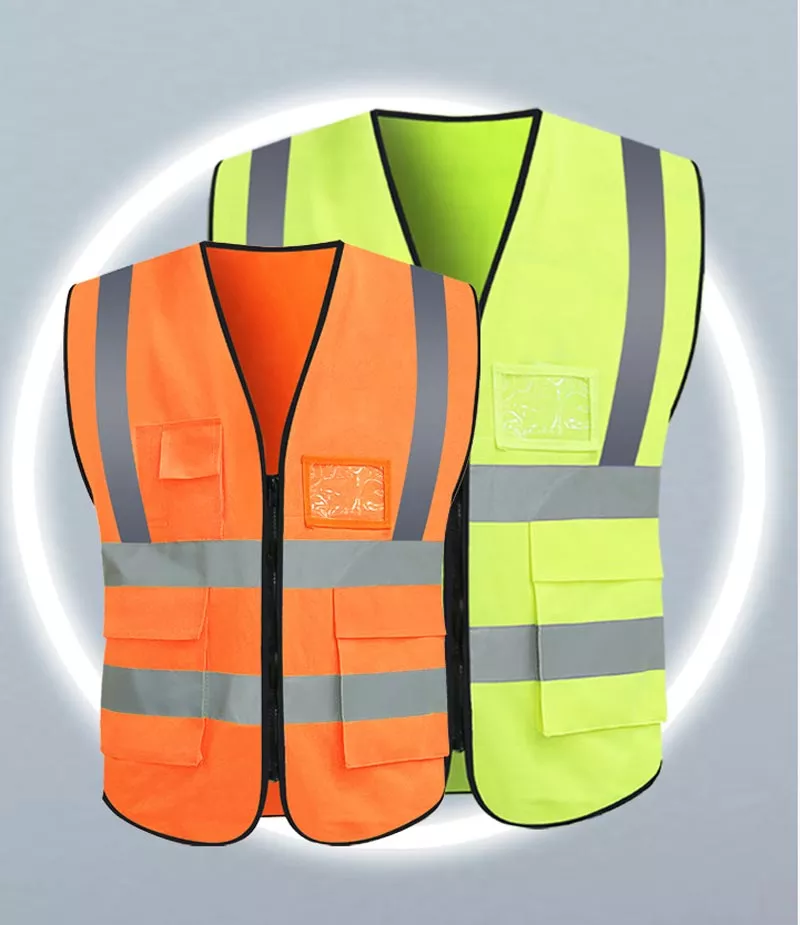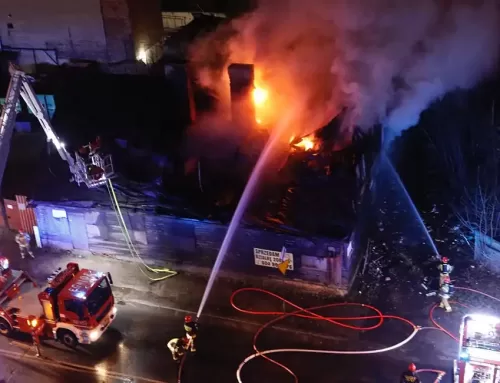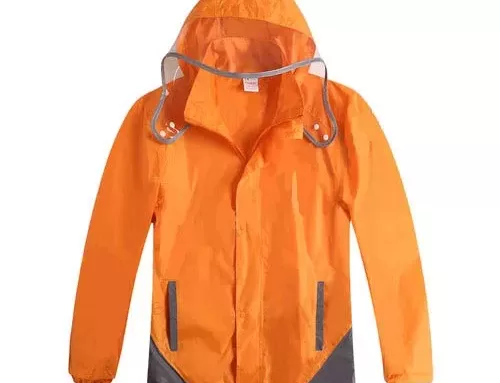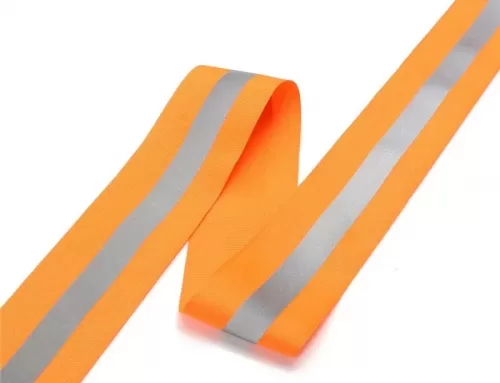Things You Need To Know About Class Safety Vest

When choosing a hi-vis vest, you should look for certain characteristics, including durability, breathability and visibility. Waterproof and breathable vests must meet specific ASTM and AATCC standards. These vests are often constructed with tear-resistant materials and can include transparent pockets for ID or credentials. Some also feature dual or grommet holes for attaching items. A good safety vest should meet the specific requirements of the workplace where you work.
Class 2 hi-vis vests

There are two types of hi-vis vests: class one and class two. Class one vests should have a minimum of 155 square inches of reflective tape. These are generally two-inch or one-and-a-half-inch reflective tape, placed around the middle of the vest and above the shoulders. Class two vests should have a combination of retroreflective and reflective stripes, as both types improve visibility.
PP Safety offers both types, and class 2 hi-vis vests are suitable for a range of different applications. Class two vests are primarily for work in high-traffic areas, with traffic flow exceeding 25mph. These vests are typically used by employees who are not positioned in close proximity to traffic and are required to be highly visible in such conditions. They come in Lime Yellow and Orange.
The requirements for class two hi-vis vests differ depending on the specific job. They must have at least 155 square inches of reflective tape and a fluorescent color. In addition, the reflective tape must not blend with the background color. The worker must also be able to focus on traffic. In addition, the background should not blend with the hi-vis clothing. In order to ensure that Class 2 hi-vis vests are effective, workers should consider the following factors when purchasing hi-vis apparel.
The ANSI Type R Class 2 Hi-vis safety vests are equipped with 10 pockets and an internal ID holder. The hi-vis safety vests also feature a convenient internal size adjustment system and a pass-through slit for fall protection gear. MILWAUKEE(r) safety vests are comfortable to wear over a t-shirt during the summer or over a jacket during the winter months. They also feature a zipper closure to ensure maximum jobsite security.
Another advantage of Class 2 hi-vis vests is that they can be purchased with retroreflective tape. The reflective tape should meet NYCTA standards. During the rainy season, it is important to buy a waterproof vest for workers. For better visibility, you should choose the Class 1 or Class 2 CSA-compliant vests. This way, you won’t have to worry about wearing the wrong safety vest while working on a project.
ANSI Class 2 safety vests are slightly larger than Class 1, with 201 square inches of reflective striping. ANSI Class 2 vests are used in environments where the traffic flow is less than fifty miles per hour. Typical Class 2 safety vests are worn by airport and highway workers, airport baggage handlers, and school crossing guards. The reflective tape should be visible over the shoulders, across the middle, and around the shoulders.
In addition to the hi-vis vest, class E pants are essential to protect workers. They can add the class E pants when the weather changes or when visibility is critical. For example, if a worker is wearing a class 2 vest, they can add class E pants to make a complete class 3 ensemble. Adding class E pants to a class 2 vest will make it class 3 or class 4 when the lighting is poor.
Class 3 hi-vis vests

The purpose of a Class 3 hi-vis vest is to provide maximum visibility for workers. These vests are made with high-visibility colors and reflective stripes on the chest, back and arms. These vests should be worn in areas with heavy traffic, such as roadwork, railway or utility construction sites. They must be clearly visible at all times. Here are some of the main uses of a Class 3 vest.
Designed for highly hazardous environments, Class 3 safety vests offer the most retroreflective striping and background material. They must be manufactured with a minimum of 310 square inches of reflective material. The reflective striping must be at least two inches wide. These safety vests are available from XW Reflective The material used in Class 3 custom safety vests is made to meet the highest standards. XW Reflective offers a wide variety of class 2 and 3 customized safety vests.
Hi-vis workwear is designed based on the specific hazards and conditions of workers. Each hi-vis product is classified according to its risk zone. Hi-vis trousers and sleeveless vests meet class 1 and class 2 requirements. Jackets and vests meeting Class 3 standards will be certified by the Joint Personal Protective Equipment Safety Agency (PESA).
Performance Class 3 high-visibility apparel is made to provide maximum visibility, even in low-lit areas. For example, a Class 3 garment must be at least two inches wide and contain one to two-inch-wide retroreflective material. Another option is to combine a Class 2 vest with a Class E set of clothing. Class E apparel includes pants, gaiters, and overalls.
A Class 2 safety vest is required for work in low-visibility areas. The weather can decrease visibility and traffic flows can exceed 25 mph. The vests typically worn by airport workers, high-volume parking operators, and toll booth operators are Class 2 vests. The reflective stripes must extend from over the shoulders to the middle of the vest. They must also be reflective enough to be seen from 50 miles per hour.
An ANSI Class 3 safety vest is available in top brand manufacturers. These vests provide optimum conspicuity and visibility for workers in a variety of situations. Wearers must be visible during their full range of body movements, and must be identifiable as a person. ANSI Class 3 hi-vis vests may be worn by flaggers, construction crews, utility workers, law enforcement, school crossing guards, and toll gate employees.
Class 1 hi-vis vests

There are two types of hi-vis vests, the first of which is the non-ANSI (American National Standards Institute) type. These are inexpensive, lightweight vests used by workers who are exposed to conditions where they need to see and be seen. Class 1 hi-vis vests are used by workers who must be visible in traffic, such as those working near highways or in inclement weather. They are also used by warehouse workers and parking lot attendants, who are exposed to varying levels of traffic, and by emergency responders who must be able to see clearly and avoid being hit by cars.
Another type of hi-vis garments is the safety vest. These vests are designed to be worn over clothing, and can be made of any material suitable for different seasons. Land surveyors can choose from a variety of vests, typically coming in Class 1 and Class 2 designs. Many models feature pockets for tools and field supplies. While not the only high-vis apparel that’s available, it’s highly recommended that workers wear one.
These hi-vis garments are highly reflective, and this reduces the risk of accidents and injury among workers. They also allow equipment operators and motorists to see workers in low-light conditions. Human eyes respond best to large, contrasting objects, so the contrast between the hi-vis garment and the background is high. It will make your workers much more visible. Hi-vis garments are essential to prevent on-the-job accidents.
Another type of hi-vis clothing is the PUMA safety vest, or high-visibility garments. The PPE (Personal Protective Equipment) Standards for High Visibility Vests vary. Some vests are used for low-risk conditions, such as parking attendants, warehouse workers, delivery people, or light duty workers in suburban cul-de-sacs. In these low-risk environments, class 1 hi-vis vests are still effective, but they don’t have reflective tape and instead feature contrasting strips in strategic locations.
Type R and P safety vests are intended for roadway occupational use. Both types of hi-vis vests have a high level of visibility. Public safety personnel need to wear these garments when working on roads and high-volume parking areas. PPE safety vests are available in different color options, and they are made of bright colors and reflective materials. They can be combined with other safety apparel to create an entire ensemble of ANSI high-vis clothing.
The reflective strips on a class one hi-vis vest must cover 155 square inches. This translates to about six linear feet of 2-inch or one-third-inch reflective tape. In addition to retroreflective material, class 1 hi-vis vests also have Combined-Performance material. This material matches the background material’s fluorescent requirements. And combined-performance tape is more durable than a standard reflective stripe.





